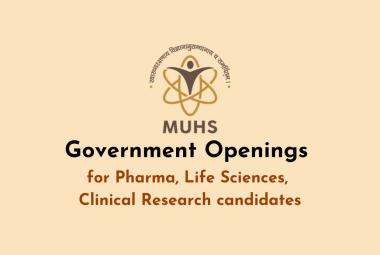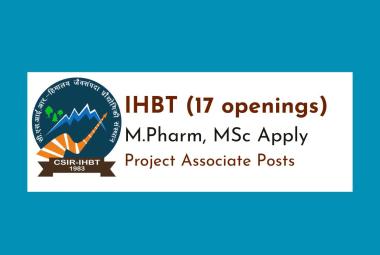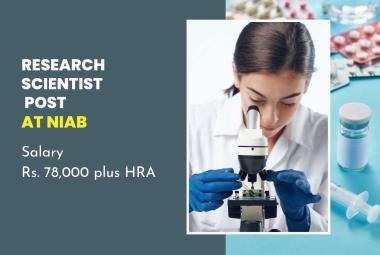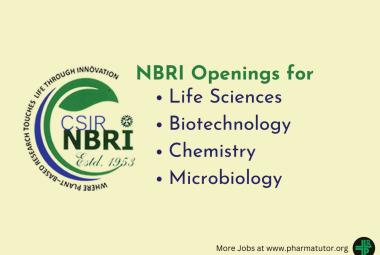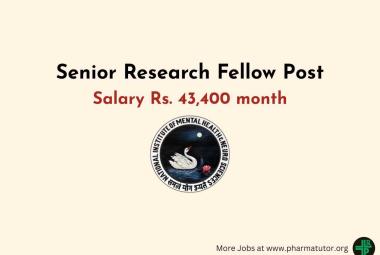{ DOWNLOAD AS PDF }
About Authors:
Pankaj Kushwah1*, Nandu Kayande2
1Department of Pharmacognosy
2HOD Department of Pharmacology
Nimar Institute of Pharmacy, Dhamnod,
Opp.ITI, Maheshwar Road Dhamnod, Dhar. M.P.454552
Pankajnipd@gmail.com
Abstract
Antiulcer activity of aqueous extracts of Annona squamosa seed extract was studied in Rats by pyloric ligation method. The extract at dose of 100,200 mg/kg produced significant inhibition of gastric lesion induced by Pylorus ligation induced ulcer. The parameters taken to assess anti-ulcer activity were volume of gastric secretion, PH, free acidity, total acidity and ulcer index. The results indicate that the alcoholic extract significantly (P < 0.001) decreases the volume of gastric acid secretion, PH, free acidity, total acidity and ulcer index with respect to control.
INTRODUCTION
Plant based drugs are one of the most important cultural and traditional parts of the people. Today, most of the world population depends upon plant based drugs for their primary health care needs. World Health Organization (WHO) estimates that 80% of the people living in developing countries almost exclusively use traditional medicines plant. The Ethno-pharmacological approach provides the way for developing new drugs from plants sources, which have historical background.Although modern medicines may be available, due to socio-economical, cultural and historical reasons, these drugs have maintained their importance.1
Peptic ulcer is one of the most common gastrointestinal diseases. The exact Causes of peptic ulcer disease is not known but it may be result from an imbalance between acid-pepsin Secretion and mucosal defence factors. Peptic ulcer disease occurs mainly due to consumption of NSAIDs, infection by H. pylori, stress or due to pathological condition such as zollinger – Ellison Syndrome.2 The plant Annona squamosa Linn. Belongs to Annonaceae family. It is small, semi-deciduous tree, found throughout India. It is traditionally used in anti-tumor, anti- diabetic and antilipidaemic activity. The bark can be used stop diarrhoea in children and adults. Fruit is used to make a hair tonic. The plant is reported to contain 1-tritriacontanol (1)(17), (+)-o-methyl armepavine (2)(15), N-methyl corydaldine (3)(18), lanuginosone (4)(19, 20), (+)anomuricine (5)(21), isocorydine (6)(22), N-methy1-6, 7- dimethoxy isoquinolone (7)(23), 6,7-dimethoxy-2- methyl iosqninolinium (8)(24, 25), 13-sitosterol (9) and 3-sitosterol-3-043-D-glucopyranoside (10) (26), 1-(443-D-glucopyranosylixypheny1)-2-(3-D- glucopyranosyloxy)-ethane (11)(26) and Rutin.3 In the present study, we screened the seed extracts of Annona squamosa for antiulcer activity.
MATERIALS AND METHODS
Plant material
Annona squamosaseed were collected from Nimar region. The botanical identity of plants was authenticated by Dr.Pusha Mahajan of the Department of Medichem, PG College Khargone. The seeds were then shade dried and grinded and made a coarse powder and the coarse powder was used for further studies.
Preparation of extract:The powder obtained was soaked in distilled water for 24 hours in percolator. After 24 hours it was allowed to percolate slowly and extract was collected in Petri dishes.5 The extract was concentrated in vaccum using rotary flash evaporator and the extract was suspended in 1% gum acacia as vehicle in this experiment.
Preliminary Phytochemical Screening The extracts were subjected to preliminary phytochemical qualitative screening to evaluate the presence of various primary or secondary metabolites following standard procedures.4
Acute oral toxicity studies: Acute oral toxicity study for aqueous extract of Annona squamosa leaves was carried out as per OECD guideline 425.
Experimental Animals
Albino Wistar rats of either sex weighing between 180-250 gm were used. Institutional Animal Ethics Committee approved the experimental protocol; animals were maintained under standard conditions in an animal house approved by Committee for the Purpose of Control, and Supervision on Experiments on Animals (CPCSEA).5
EVALUATION OF ANTI -ULCER ACTIVITY
Pyloric ligation – induced ulcer
Animal are divided in to four groups, each contain 6 animals (mention in above method).Group I having pyloric ligation and received distilled water orally. Groups II received ranitidine (20 mg/kg) as reference drug for ulcer protective study. Group III and IV received aqueous extract of Annona squamosaseed in a dose of 100 and 200mg/kg. After 45 min of aqueous extract of Annona squamosaseed and ranitidine treatment, pyloric ligation was be done by ligation the pyloric end of stomach of rats of respective groups under ether anesthesia. Animal were allowed to recover and stabilize in individual case and were deprived of water during post operative surgery. After 4 h. of surgery, rats were sacrificed and ulcer score was done. Gastric juice was collected and gastric secretions studied were performed
Statistical analysis
Statistical analysis was carried out by using ANOVA followed by Dunnet’s multiple comparison tests using Graph pad PRISM software version 4.03 (2005). ‘P’ values <0.05 were considered significant.
RESULT AND DISCUSSION
Phytochemical screening: The preliminary phytochemical screening of the extract of Annona squamosal seed showed the presence of carbohydrates, alkaloids, sterols, flavonoids, saponins, tannins and phenolic compounds, Protein and amino acids. The various phytoconstituents present in the extract.
ANTI -ULCER ACTIVITY: In the present study, aqueous leaf extract of Annona squamosaseedwas evaluated for its anti-ulcer activity against pylorus ligation induced gastriculcer model. The results of study are tabulated in Table-I
Table 1. Effect of various extracts of Annona squamosaseed against Pylorus ligation induced gastric ulcer in rats
|
Treatment |
Dose (mg/kg) p.o |
Volume of gastric juice(ml/4h) |
PH |
Free Acidity (mEq/L) |
Total Acidity (mEq/L) |
Ulcer Index |
%Inhibition of ulcer |
|
Group-I Control (Normal saline) |
2ml/kg |
4.01±0.12 |
1.74±0.24 |
25.34±0.08 |
71.16±0.20 |
3.58±0.46 |
_ |
|
Group-II Standard (ranitidine) |
20mg/kg |
1.84 ±0.06 |
4.86±0.15 |
10.42 ±0.02 |
22.24±0.18 |
0.71 ±0.14 |
79.60*** |
|
Group-III Aqueous Extract |
100mg/kg |
3.56 ± 0.16 |
3.11±0.14 |
20.18 ±0.05 |
51.14 ±0.38 |
2.34 ± 0.24 |
34.31* |
|
Group-IV
|
200mg/kg |
2.30 ± 0.14 |
4.36 ±0.16 |
10.76 ±0.06 |
30.62 ±0.26 |
1.10± 0.29 |
72.20** |
Results are mean ± S.E.M.(n = 6). Statistical comparison was performed by using ANOVA coupled with student‘t’ test.* P<0.05, ** P<0.01, *** P<0.001 were consider statistically significant when compared to control group. In ligation induced gastric ulcer. Both doses of Annona squamosa extract showed significant reduction in ulcer index, free acidity, total acidity and gastric volume but raised PH of gastric Juice as compared to the control groups. It was showing protection index 34.31% and 72.20% at a dose of 100 and 200 mg/kg respectively compared with standard drugs ranitidine showed 79.60% (Table-I).Plant extracts are some of the most attractive sources of new drugs and have shown promising results in the treatment of gastric ulcers. Several folk medicinal plants and herbs have been used to treat gastrointestinal disorders or gastric ulcer.6
CONCLUSION
The results suggest that the seed extract of Annona squamosapossesses antiulcer effect. It prevented the development of gastric ulcers induced by pylorus ligation.
REFERENCES
1.Alok Bhardwaj, Rajeev Kumara, Vivek Dabasa, Niyaz Alam. “Evaluation of anti-ulcer activity of citrullus lanatus seed extracts in wistar Albino rats”. International Journal of Pharmacy and Pharmaceutical Science, Vol 4, Suppl 5, 2011.
2. Dinesh kumar patidar.”Anti-ulcer activity of aqueous extract of murraya koenigii in albino rats”. International Journal of Pharma and Bio Sciences.Vol-2 Issue1.
3. CH. Madhu, P. Jonathan Brainard, G. Prithvi Raj, J. Swapn and A. Samba Siva Rao.” Anti ulcer activity of aqueous extract of annona squamosa leaves on rats”. IJPSR, 2012; Vol. 3(11): 4429-4433 .
4. Kokate CK, Purohit AP, Gokhale SB. Pharmacognosy, NiraliPrakashan; 39th edi. Aug. 2007. 284-285.
5.Swati S. Kansara, Manmohan Singhal.” Evaluation of Antiulcer Activity of Moringa Oleifera Seed Extract”. JPSBR: Volume 3, Issue 1: Jan Feb 2013 (20-25).
6. Sengupta Mohua, Mondal Palash Saha (Das) Mitz, Paul Suhrita,Gupta Mradu. “Evaluation of anti-ulcer activity of aqueous extract of black cumin Seeds (nigella sativa l) on experimental albino rats”. Journal of Drug Delivery & Therapeutics; 2013, 3(1), 25-28.
7.Ramesh Alluri, Anil Kumar Sagi, Praveen Kumar Pasala.”Evaluation of gastric antiulcer and antioxidant activities in aqueous extracts of annona squamosa and achyranthes aspera in rats.” International Journal of Phytopharmacology. 2(2), 2011, 66-69.
REFERENCE ID: PHARMATUTOR-ART-2185
|
PharmaTutor (ISSN: 2347 - 7881) Volume 2, Issue 6 Received On: 10/04/2014; Accepted On: 18/04/2014; Published On: 01/06/2014 How to cite this article: P Kushwah, N Kayande; Antiulcer Activity of Annona Squamosa Seed Extract in Experimental Rats; PharmaTutor; 2014; 2(6); 174-176 |
NOW YOU CAN ALSO PUBLISH YOUR ARTICLE ONLINE.
SUBMIT YOUR ARTICLE/PROJECT AT articles@pharmatutor.org
Subscribe to Pharmatutor Alerts by Email
FIND OUT MORE ARTICLES AT OUR DATABASE



